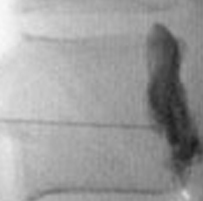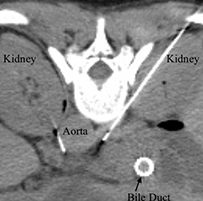A lumbar sympathetic block is an injection of local anesthetic into the back using X-ray guidance. With this procedure, we are blocking the sympathetic nerves to your leg. These nerves typically are not responsible for sensation, but they can be "turned on" in certain pain syndromes.
This procedure is typically ordered by your doctor for pain located in the buttocks and/or legs that is caused by sympathetically maintained pain, or complex regional pain syndrome, formerly known as reflex sympathetic dystrophy (RSD). It may also be ordered for nerve injury or post-herpetic neuralgia (herpes zoster, shingles). Lumbar sympathetic blocks are also used with circulation problems (e.g., vascular insufficiency) to see if blood flow can be improved.
Lumbar sympathetic blocks may have therapeutic or diagnostic value. One of two things will happen:
The pain does not go away, and there is evidence of a sympathetic block. The fact that the pain is unresponsive to sympathetic blocks is of diagnostic value.
The pain goes away after the injection and stays away longer than the life of the local anesthetic. This means the block was of therapeutic value.
This procedure will most likely have to be repeated to produce a long-lasting benefit. The spacing of injections will be based on how long the pain relief lasts between injections. Typically, you will experience a longer benefit following each subsequent injection. We also may decide to "destroy" the sympathetic ganglion using radiofrequency energy if you obtained excellent, but temporary, relief.
The celiac plexus is a bunch of nerves that supplies the sensation from organs in your abdomen (e.g., pancreas, bowel, etc.).
It is used for patients with pain due to abdominal malignancy or chronic pancreatitis.
The plexus is located along the side of your spine.
Alcohol is injected to destroy the nerves when a neurolytic block is performed, usually for patients with cancer.
A diagnostic block is often done prior to a neurolytic block to ensure that pain relief can be achieved by this type of injection. Your doctor will tell you if you are an appropriate candidate for a neurolytic block.








